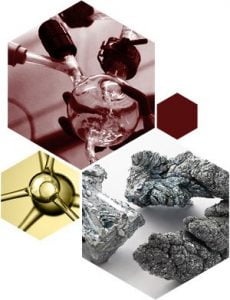
Lithium Thiocyanate Hydrate
Properties
- We can offer items in bulk or custom. For other quantities or purities, please request a quotation.
- All prices are subject to change.
Information about Lithium Thiocyanate Hydrate / CAS 123333-85-7
Lithium Thiocyanate hydrate (LiSCN·XH₂O) is a versatile compound with a range of applications across multiple industries, particularly in energy storage, chemical processes, and material science. Due to its ionic conductivity and ability to form stable complexes, Lithium Thiocyanate hydrate is being explored for use in various cutting-edge technologies, particularly in the realm of advanced battery systems and recycling processes.
Lithium Thiocyanate hydrate is currently being explored as a potential additive or alternative electrolyte component for use in Lithium-ion batteries. As the demand for high-efficiency energy storage systems continues to grow, LiSCN has shown promise as an electrolyte material. The compound’s excellent ionic conductivity, particularly in ionic liquids and solid polymer electrolytes, makes it a strong candidate for energy storage devices, offering high ionic conductivity, thermal stability, and enhanced battery performance. Researchers have explored lithium thiocyanate in various forms, including its incorporation into polymer electrolytes, to improve ionic conductivity. This makes Lithium Thiocyanate an ideal material for next-generation batteries that require both high energy density and long-lasting performance.
In addition to its role in energy storage, Lithium Thiocyanate hydrate has been studied for its use in metal extraction, particularly in the recycling of spent Lithium-ion batteries. Studies have demonstrated that Thiocyanate ions, when combined with Lithium ions, can facilitate selective separation of critical metals such as cobalt from other battery components, presenting a promising avenue for advanced recycling techniques. The ability to selectively extract valuable metals makes Lithium Thiocyanate a promising solution for improving the sustainability of battery production and reducing waste. This application is gaining traction in the environmental and recycling industries, where companies are focusing on efficient metal recovery from used electronic devices and energy storage systems.
Lithium Thiocyanate hydrate is used in laboratory research and specialized chemical studies, contributing to various scientific investigations. It has been studied as a reagent for synthesizing Thiocyanate-based compounds and metal-thiocyanate complexes, with its solubility in organic solvents making it useful in coordination chemistry. Research has also explored its role in spectroscopic and analytical applications, particularly in studying ionic conductivity, solvation effects, and molecular interactions in polymer electrolytes. Additionally, LiSCN has been used as a spectroscopic probe in Raman and infrared spectroscopy to analyze ion pairing and solvation dynamics. While these applications remain within academic and experimental settings, they provide valuable insights into materials science, electrochemistry, and molecular chemistry.
- Ravi, M., Song, S. H., Gu, K. M., Tang, J. N., & Zhang, Z. Y. (2015). Effect of lithium thiocyanate addition on the structural and electrical properties of biodegradable poly (ɛ-caprolactone) polymer films. Ionics, 21, 2171-2183.
- Joos, M., Conrad, M., Rad, A., Kaghazchi, P., Bette, S., Merkle, R., … & Maier, J. (2022). Ion transport mechanism in anhydrous lithium thiocyanate LiSCN Part I: Ionic conductivity and defect chemistry. Physical Chemistry Chemical Physics, 24(34), 20189-20197.
Safety
- H302 Harmful if swallowed.
- H312 Harmful in contact with skin.
- H315 Causes skin irritation.
- H332 Harmful if inhaled.
- H412 Harmful to aquatic life with long lasting effects.
- P312 Call a POISON CENTER or doctor/physician if you feel unwell.
- P261 Avoid breathing dust/fume/gas/mist/vapours/spray.
- P280 Wear protective gloves/protective clothing/eye protection/face protection.
- P271 Use only outdoors or in a well-ventilated area.
- P273 Avoid release to the environment.
- P302+P352 IF ON SKIN: wash with plenty of soap and water.


